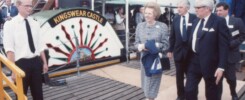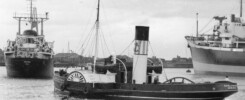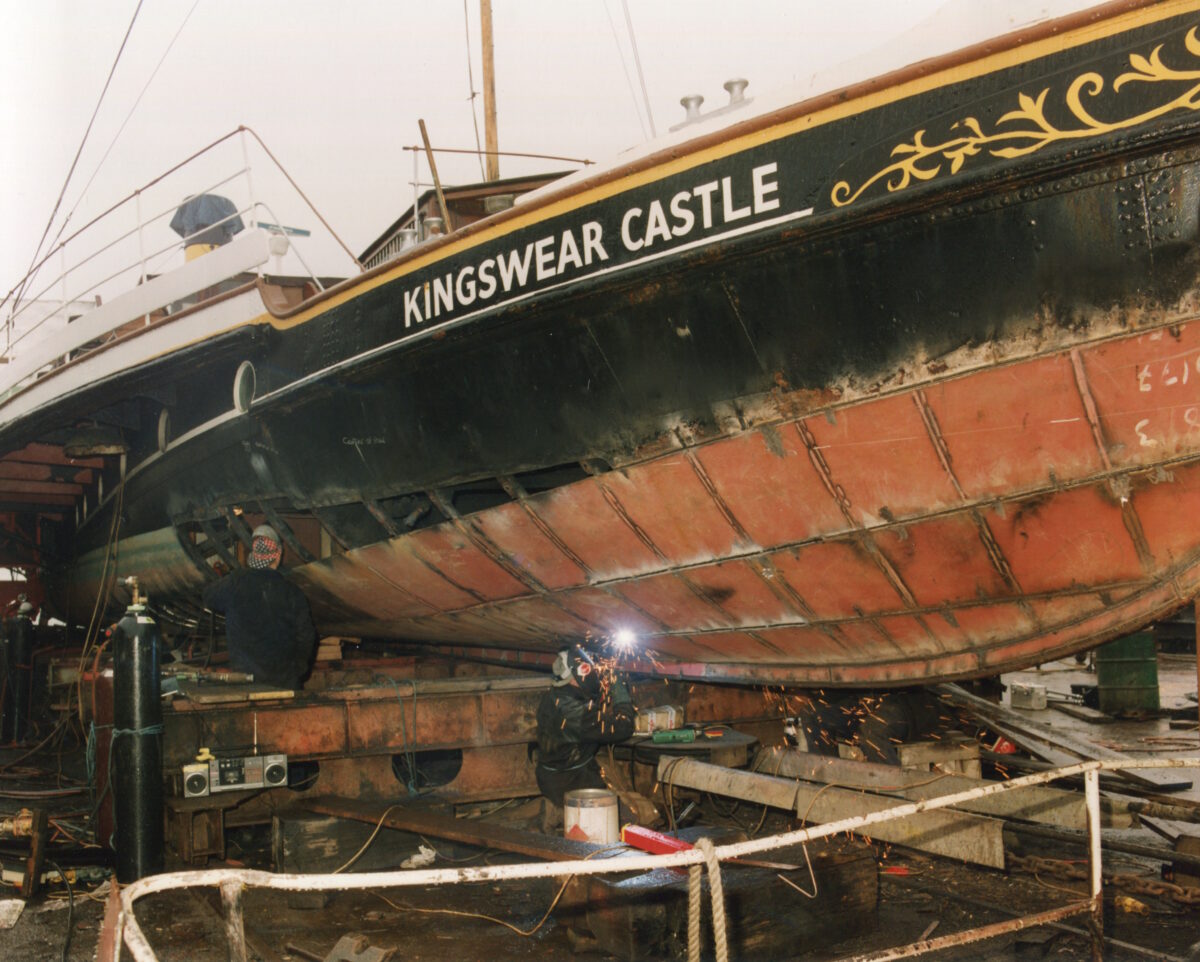
On Friday 8th January 1993 KC’s engineering trustee Alan Beavan OBE and I had a meeting with the management of Crescent Shipyard at Strood to sign the contract for them to re-plate Kingswear Castle’s bottom eight years after she had been returned to service in 1985.
The volunteers and others who had worked tirelessly on KC throughout the 1970s and on into the 1980s were good people who had done an excellent job within the limits of their resources. But they were few in number. The necessary skill sets were not always readily available and there was no real funding behind the project from start to finish. All credit to them therefore that in the end they got KC into a sufficient state for her Passenger Certificates to be renewed for her return to service in 1985. However it soon became clear to me that KC needed real money being spent on her if she was to have any long term operational future.
Take just one example. In the winter of 1991 I was going round under the bottom of the ship with a chipping hammer banging away at plates to get a feel for their strength and I found one place with a sinking heart where my hammer went through and made a hole. Oh dear. We took ultrasonic readings in the vicinity and in the end cut out that section of plating and inserted new. But it was a warning to me and flagged up in my mind that we just had to raise sufficient money to re-plate the whole bottom.
By 1993 we had sufficient funds available for this project from a surplus of income over expenditure in the trading revenue and a grant from Rochester Upon Medway City Council plus a donation from the Manifold Trust and another from the PSPS. For all this we were very grateful.
And so on the morning of Friday 8th January 1893 Alan and I were meeting with the senior management in their office at the Crescent Shipyard to sign the contract. This had been put together by me and Alan who had real practical experience of this sort of large scale project management having at one stage in his career been Project Manager for the Mountstuart Shipyard in Cardiff. His fist job there in 1961 had been to upgrade British Railway’s Channel Island ferry St Patrick to make her a more suitable running mate for the then newly built Caesarea and Sarnia.
There was therefore nothing that Alan didn’t know about the whys, wherefores and other vagaries of shipyard practice. For example I remember him insisting on putting a clause in the contract that it was down to the shipyard to dispose of the scrap steel taken off the hull. “Got to put that in” Alan said. “If we don’t then that leaves the way open to them charging for removal of the old steel as an extra cost at a later date”. And so on.
That is of course what contacts are for really, to produce a document which shows where everyone stands and what is expected of all parties in all circumstances through to delivery of the product. In that way later disputes can be avoided where one party thinks that the other should have done something which they don’t believe that they were contracted to do and should be extra to the agreed contract. Alan was a great help to me and I learned so much from him not only about practical issues like this but also about life in general. I was very sad when he died in 2008.
With the contract now signed and the new steel ordered, on the tide on Monday 18th January KC was towed from her berth at Thunderbolt Pier, Chatham up to the shipyard at Strood and hauled out. The next day the surveyor came down to witness the start of the work and we were off.
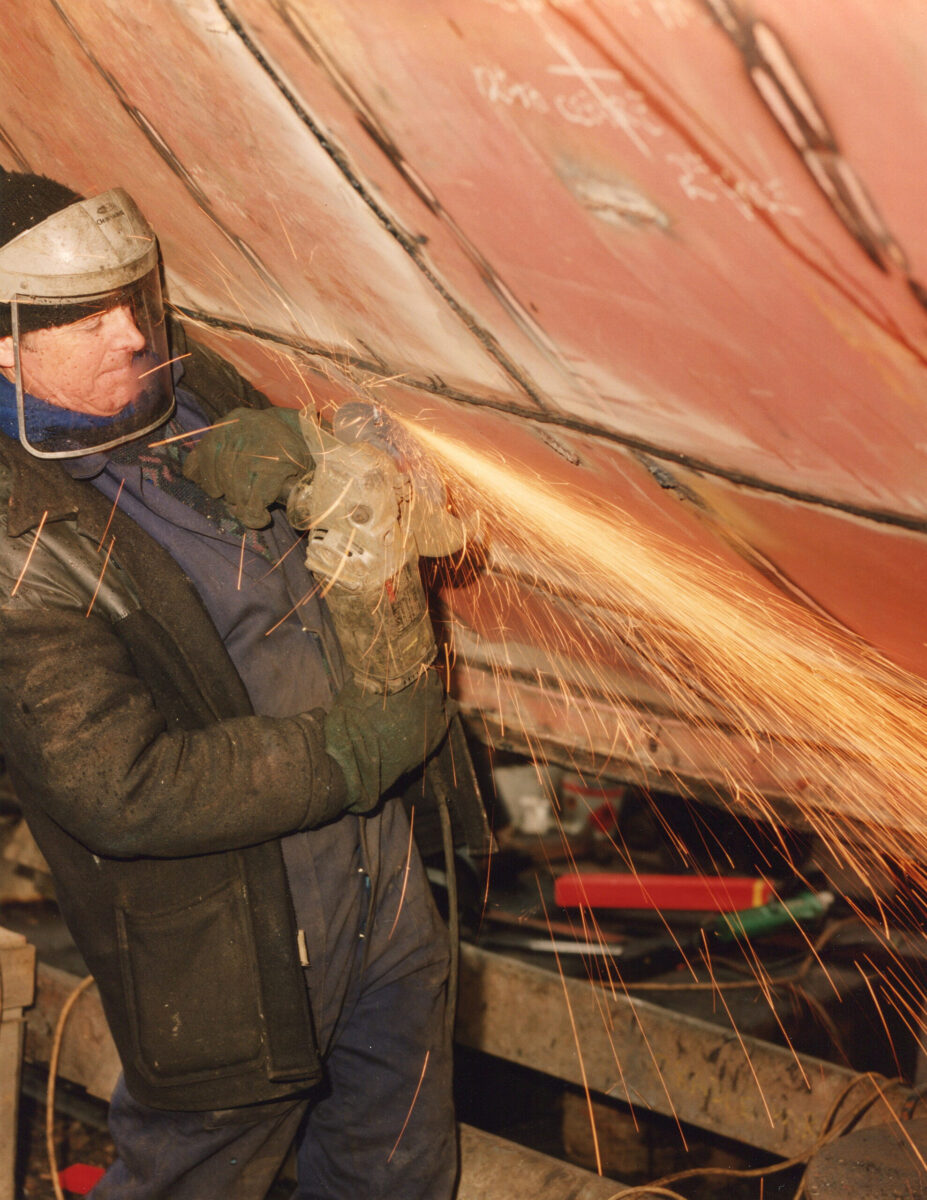
KC’s hull had been built in 1924 in strakes with steel 8mm thick next to the keel; then a 6mm thick strake outside that with another 8mm strake outside that and so on around the turn of the bilge and up the ship’s sides. The plan of campaign was to remove only part of one strake at any one time to try to preserve the strength of the ship.
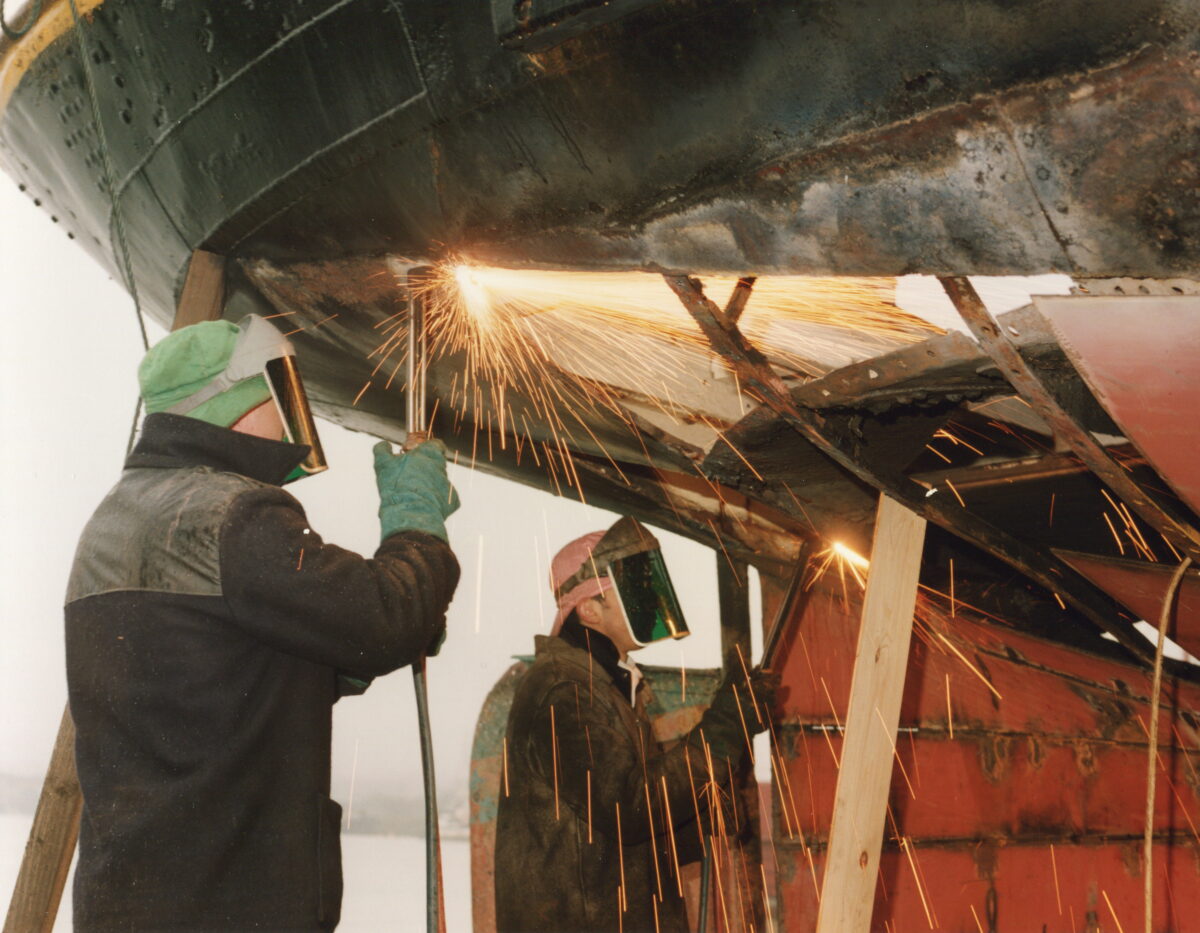
The most difficult part was around the stern where some of the plates needed to be curved.
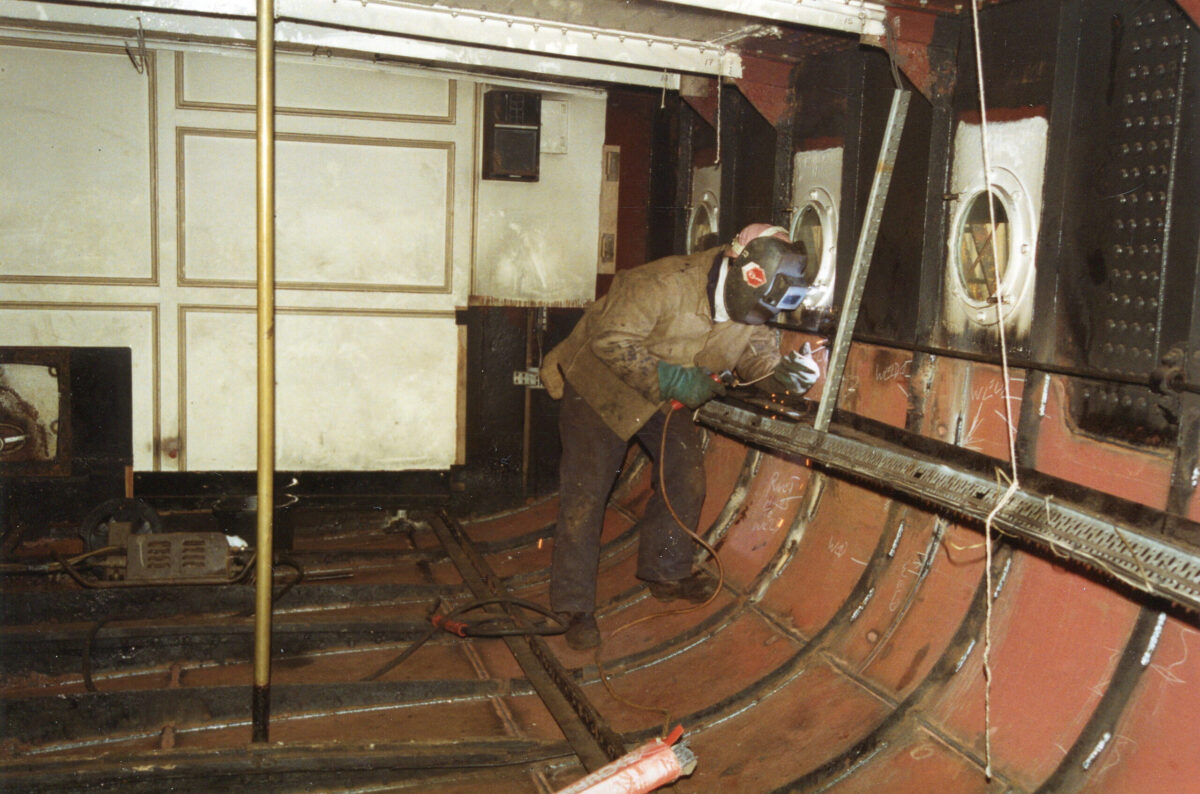
This picture shows what a shallow draft ship KC is. When you are standing on the carpet on the floorboards in the aft saloon you are almost standing on the ship’s bottom.
The work was completed in mid March. KC returned to the water. Steam was raised and we ran trials successfully on the river with a surveyor in attendance on Thursday 1st April. The first trip of the season was taking a coach party for an afternoon cruise on the Medway on Wednesday 7th April 1993.
It was a good project well done and we are very grateful for all the work which Crescent Shipyard did to deliver it on time and to the agreed budget. It also reassured me that now KC had a good and solid bottom and that I wouldn’t in future be able to knock a hole in her steelwork with my hammer during the refits.
But of course that is now twenty seven years ago which is a long time in the life of a ship. That is why all of us at the Paddle Steamer Kingswear Castle Trust are now starting to bring our minds to look at another rebuild of the ship in the not too distant future. Watch this space.
Kingswear Castle returned to service in 2023 after the first part of a major rebuild which is designed to set her up for the next 25 years running on the River Dart. The Paddle Steamer Kingswear Castle Trust is now fund raising for the second phase of the rebuild. You can read more about the rebuilds and how you can help if you can here.
John Megoran
This article was first published on 8th January 2021.

